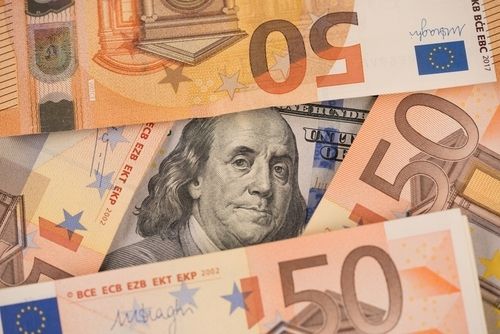
EUR/USD receives downward pressure as the ECB is widely expected to deliver a 25 basis point rate cut on Thursday.
Rising Middle-East tensions put pressure on the risk-sensitive Euro.
The US Dollar gains ground as the Fed is projected to slow the pace of borrowing cost reductions.
EUR/USD continues its downward trend for the fourth consecutive session, hovering around 1.0920 during the Asian trading hours on Monday. The Euro faces downward pressure as the European Central Bank (ECB) prepares for its monetary policy decision on Thursday.
The ECB is widely anticipated to reduce its Main Refinancing Operations Rate by 25 basis points. Officials have signaled the potential for further reductions in response to the European Union's economic challenges. The central bank has already lowered rates twice this year and is expected to continue with incremental 25 basis point cuts in future meetings.
On the geopolitical front, escalating tensions in the Middle East have sparked concerns of a broader regional conflict, strengthening the safe-haven US Dollar and putting pressure on the risk-sensitive EUR/USD pair. According to CNN, at least four Israeli soldiers were killed, and over 60 people were injured in a drone attack in north-central Israel on Sunday.
The decline of the EUR/USD pair could also be linked to a stronger US Dollar (USD), fueled by expectations that the US Federal Reserve (Fed) will slow the pace of borrowing cost reductions more than previously anticipated.
Traders are looking for a 25 basis points (bps) rate cut from the Fed in November, following the release of the Producer Price Index (PPI) data from the United States last Friday. According to the CME FedWatch Tool, the markets are pricing in an 86.9% chance of a 25 basis point rate cut in November, with no expectation for a 50-basis-point reduction.
In September, the annual Producer Price Index (PPI) increased by 1.8%, following a 1.9% rise in August, and exceeded market expectations of 1.6%. Meanwhile, the annual core PPI, which excludes food and energy prices, rose by 2.8%, surpassing analysts' forecast of 2.7%.
Euro FAQs
The Euro is the currency for the 19 European Union countries that belong to the Eurozone. It is the second most heavily traded currency in the world behind the US Dollar. In 2022, it accounted for 31% of all foreign exchange transactions, with an average daily turnover of over $2.2 trillion a day. EUR/USD is the most heavily traded currency pair in the world, accounting for an estimated 30% off all transactions, followed by EUR/JPY (4%), EUR/GBP (3%) and EUR/AUD (2%).
The European Central Bank (ECB) in Frankfurt, Germany, is the reserve bank for the Eurozone. The ECB sets interest rates and manages monetary policy. The ECB’s primary mandate is to maintain price stability, which means either controlling inflation or stimulating growth. Its primary tool is the raising or lowering of interest rates. Relatively high interest rates – or the expectation of higher rates – will usually benefit the Euro and vice versa. The ECB Governing Council makes monetary policy decisions at meetings held eight times a year. Decisions are made by heads of the Eurozone national banks and six permanent members, including the President of the ECB, Christine Lagarde.
Eurozone inflation data, measured by the Harmonized Index of Consumer Prices (HICP), is an important econometric for the Euro. If inflation rises more than expected, especially if above the ECB’s 2% target, it obliges the ECB to raise interest rates to bring it back under control. Relatively high interest rates compared to its counterparts will usually benefit the Euro, as it makes the region more attractive as a place for global investors to park their money.
Data releases gauge the health of the economy and can impact on the Euro. Indicators such as GDP, Manufacturing and Services PMIs, employment, and consumer sentiment surveys can all influence the direction of the single currency. A strong economy is good for the Euro. Not only does it attract more foreign investment but it may encourage the ECB to put up interest rates, which will directly strengthen the Euro. Otherwise, if economic data is weak, the Euro is likely to fall. Economic data for the four largest economies in the euro area (Germany, France, Italy and Spain) are especially significant, as they account for 75% of the Eurozone’s economy.
Another significant data release for the Euro is the Trade Balance. This indicator measures the difference between what a country earns from its exports and what it spends on imports over a given period. If a country produces highly sought after exports then its currency will gain in value purely from the extra demand created from foreign buyers seeking to purchase these goods. Therefore, a positive net Trade Balance strengthens a currency and vice versa for a negative balance.
* The content presented above, whether from a third party or not, is considered as general advice only. This article should not be construed as containing investment advice, investment recommendations, an offer of or solicitation for any transactions in financial instruments.



